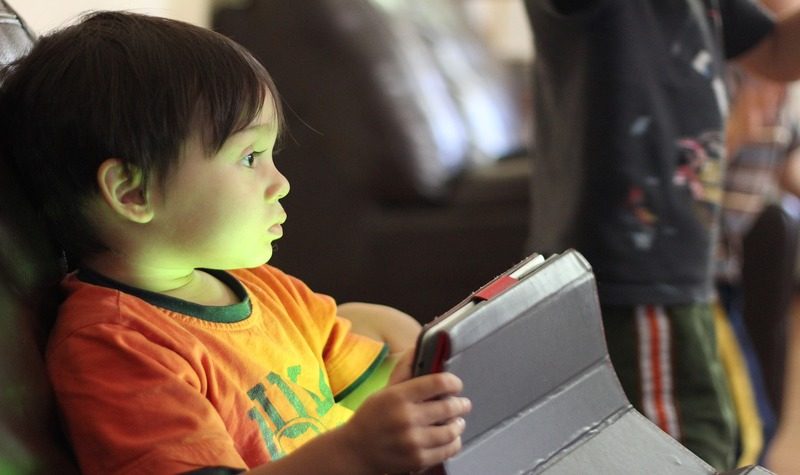Is Writing Important?
“People don’t write anymore.”
This past month, I was working with a high school group. One student was reluctant to write. He commented, “People don’t write anymore.”
I genuinely pondered his statement, silently asking myself, “That’s interesting. How important is writing these days? If it’s important at all, is it only so for certain ages, or everyone? I’m open to honest dialogue about this…”
Then, I asked him, “If you had to write something, what would it be?” “A text,” he quickly answered. I smiled sweetly and understood.
That particular group of students wrote Haikus. They each chose a scenic calendar page to inspire their writing.

The student I was speaking to had a calendar picture of the planet Mars. He wrote two Haikus for the picture, then showed them both to me. After I read them, I complimented him for his creativity.
His response was, “I actually really like the 2nd one.”
He participated in all the games that we played as well. Needless to say, I was very proud of this student. And I can understand him. Nowadays, people text, instant message, send emails etc.
However, on the way home, the thought occurred to me, “Just because the calculator was invented, students didn’t stop learning how to write out long division.”
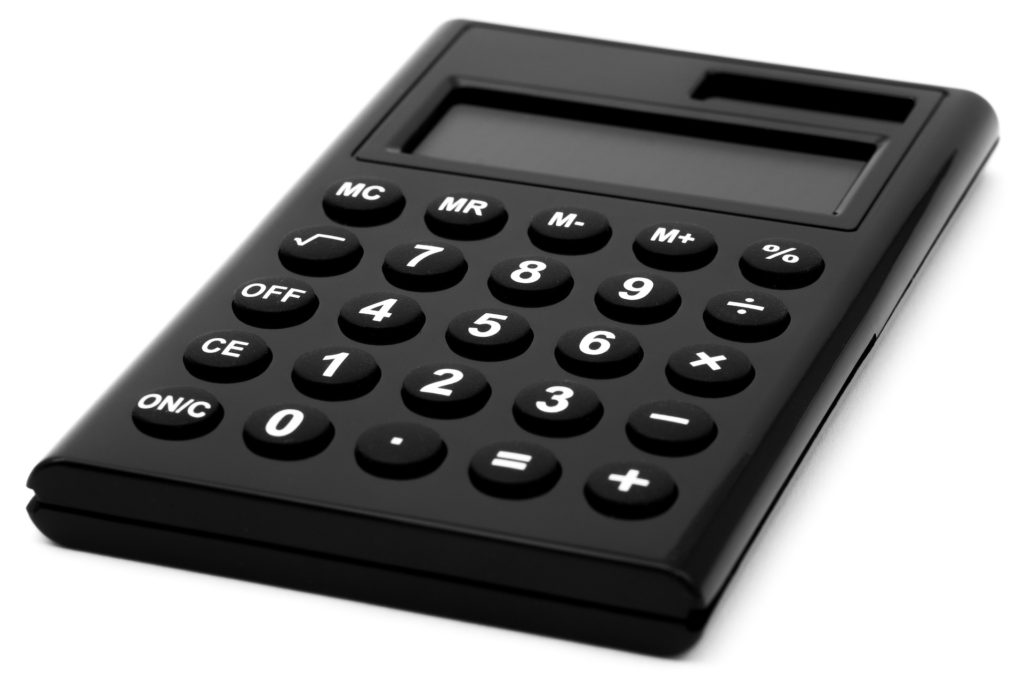
While I’m open to discussing whether or not writing is important and if it’s a necessary skill for the future of our children, this is what I do know for right now.
THERE’S A LOT MORE TO WRITING THAN WRITING.
Fine Motor Skills
First of all, writing strengthens young children’s hand muscles. It’s an actual physical exercise.
This past spring, I met with my former literacy coach. I wanted her feedback about this website, Fun Writing Ideas, that I’m building. Over the course of our conversation she explained to me that so many incoming kindergartners have very week fine motor skills.
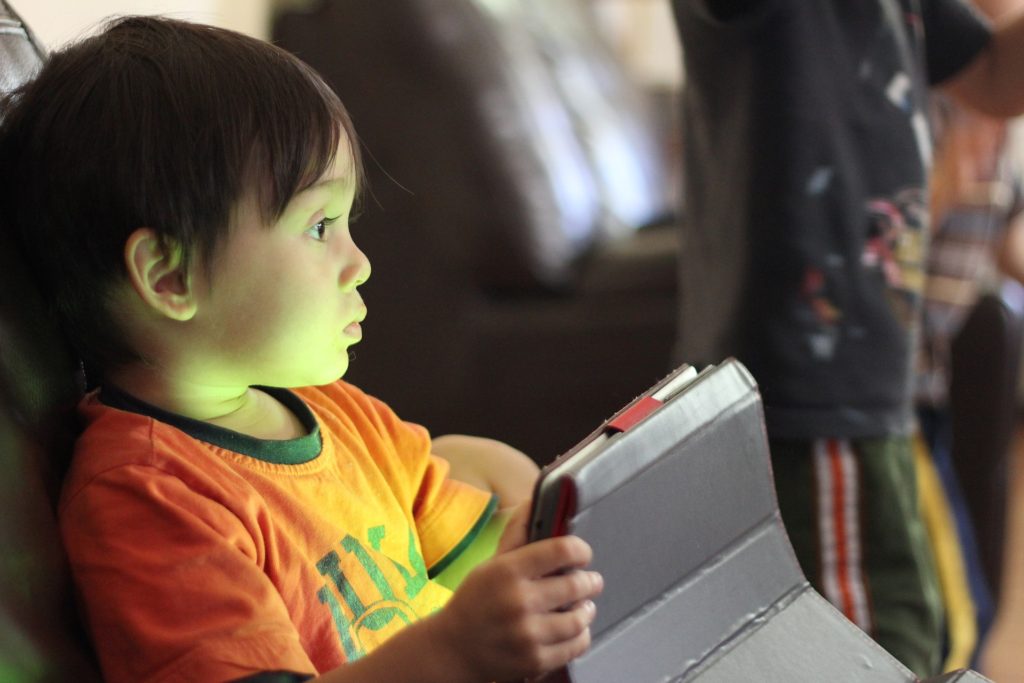
Weak Finger and Hand Muscles
Because they are using I-Pads and I-Phones more and more, their fingers are simply learning to touch and swipe. They literally come in with weak finger muscles that have a very difficult time holding a pencil, crayon or marker.
Right now, in one of my afternoon writing classes, I’m seeing this first hand. I have a kindergartner who is having trouble holding the pen. He’s eager to write. He knows the names of the letters and their sounds, but it’s a struggle for him to hold up the pen to write them out.
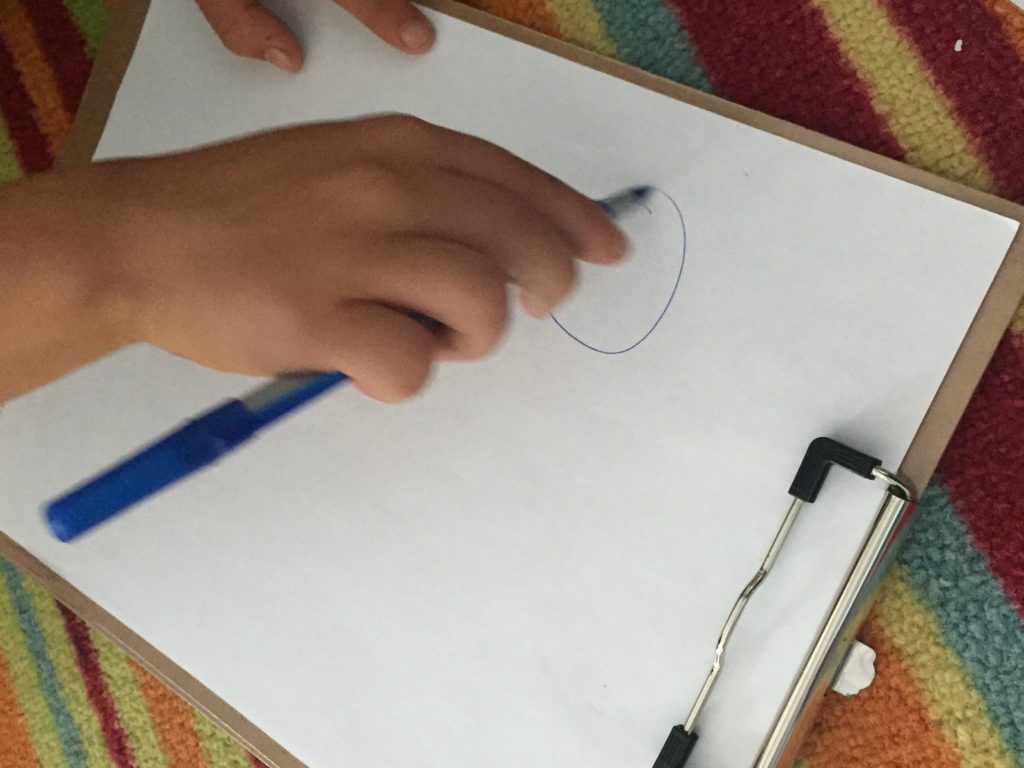

Meanwhile, he talks a lot about his video games. It’s real. Video games are taking the place of drawing, coloring, cutting, pasting, holding toys, building, etc.
Consequently, the manifestation of these new habits are weak finger and hand muscles (which is termed weak FINE MOTOR SKILLS).
On the other hand, writing in any capacity, whether it be drawing, coloring or painting is going to strengthen these muscles.
Increased Attention Span
Secondly, teaching children how to draw lines, write letters, form words and build sentences early on, increases their attention span. Writing takes time. It’s an output activity in which their brain and their muscles are physically producing something. Writing is not quick gratification. It’s a process that they work through slowly.
Consistently, I notice among my friends’ children and the students that I work with, that those children who learn to color, draw and write early are able to focus on activities.
I can speak most accurately of my own children whom I work with the most. We have 4 children ages 7, 6, 4 and 17 months. The oldest three are able to sit down at a table to color, draw and/or write for a nice period of time. They are used to the slow process of building a picture or a story.
Attention Towards Books
In addition to being able to color, draw and write, all three children are able to sit down and enjoy books for a long time.

Beginning at age 2, they spend time focusing on the details in illustrations and photos. As they learn to read, they spend the time doing both, reading and looking at the pictures.
Attention Towards Activities
Lastly, I’ve noticed that my children (who learned to write early on) are able to engage in and enjoy most activities for a long time.
For instance, they finish board games and have lengthy phone conversations with their grandparents. Together, we watch documentaries. In addition, they can play outside for hours sometimes.
This past month they endured a 17 hour drive into Canada with little to no complaint, and then the same drive back.

Attention When Travelling
No I-Pads or I-Phones. They blew bubbles, drew, looked out the window, chatted, slept, played travel games etc. We did have a DVD player that we used for one hour going up and one hour coming back. It wasn’t used to hush them. They got to watch something as a reward for their champion travelling abilities. (AND they got the biggest ice cream cones on the planet when we arrived.) Needless to say, we are very proud of them and eager to take them on more trips.
My purpose in saying all of this is that teaching children to color, draw and write early on can help increase their attention span and enable them to focus on and enjoy activities for longer periods of time.
Strong Reading
Thirdly, writing slows down the reading process for children learning to read. Strong writing typically produces strong reading.

I’ve been teaching children of all ages and languages for nearly 20 years. The most effective way that I have found to teach children how to read and write comfortably and confidently is through writing Sight Word Sentences.

This is a low key, low pressure approach to writing and reading that builds children’s confidence quickly and sends them forth with good writing and spelling habits.
It’s also extremely economical requiring paper and pen only (or markers!).
To read the full article about Sight Word Sentences and how to use them, click here.
As children slow down to draw the letters and form the words, they learn the entire reading process from the bottom up. They draw lines, write letters, form words, build sentences, develop paragraphs and ultimately, write stories and essays.

Following these steps, children learn the entire reading process from small to big. The big (READING) starts to look small (EASY).
As I mentioned before, just because the calculator was invented, students didn’t stop learning how to write out long division. In the same way that students learn why 8120 divided by 56 is 145 by writing it out, children learn how written text works by writing it themselves.
Confidence and Empowerment
Lastly, teaching children to write early on builds their confidence and truly sets them up for academic success. Whether or not writing is taught early on, writing still remains a large part of any academic subject.
Most Subjects Involve Writing
For example, children have to write their name. In reading, they’re asked to respond to texts. In Math, they write answers and explanations to problems. For Science, they write out investigations. History class asks that they write reports. The list goes on.
I genuinely empathize with teachers, parents and students who feel like writing is a drag and dreadful. However, I believe wholeheartedly that it doesn’t have to be that way if coloring, drawing, drawing letters, writing words and Sight Word Sentences are taught early on.
Children Confidently Choose To Write
So far, my 3 children ages 7, 6 and 4 are on track for confident and comfortable writing.
Last week, I was on a rare What’s App phone call with my friend in Romania. My children were having a free time while I was sauteing hot dogs for lunch. They approached me several times, tapping my arms, begging for my attention. I continued to hush them. Desperate, they finally came into the kitchen waving their signs:
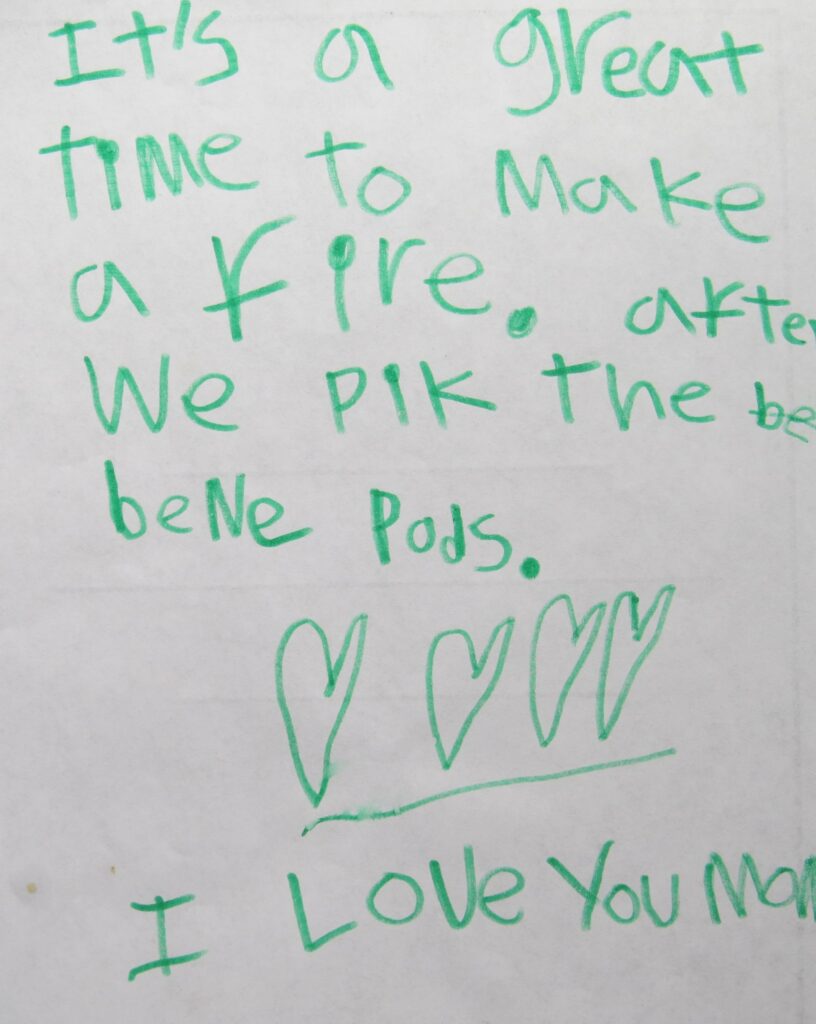
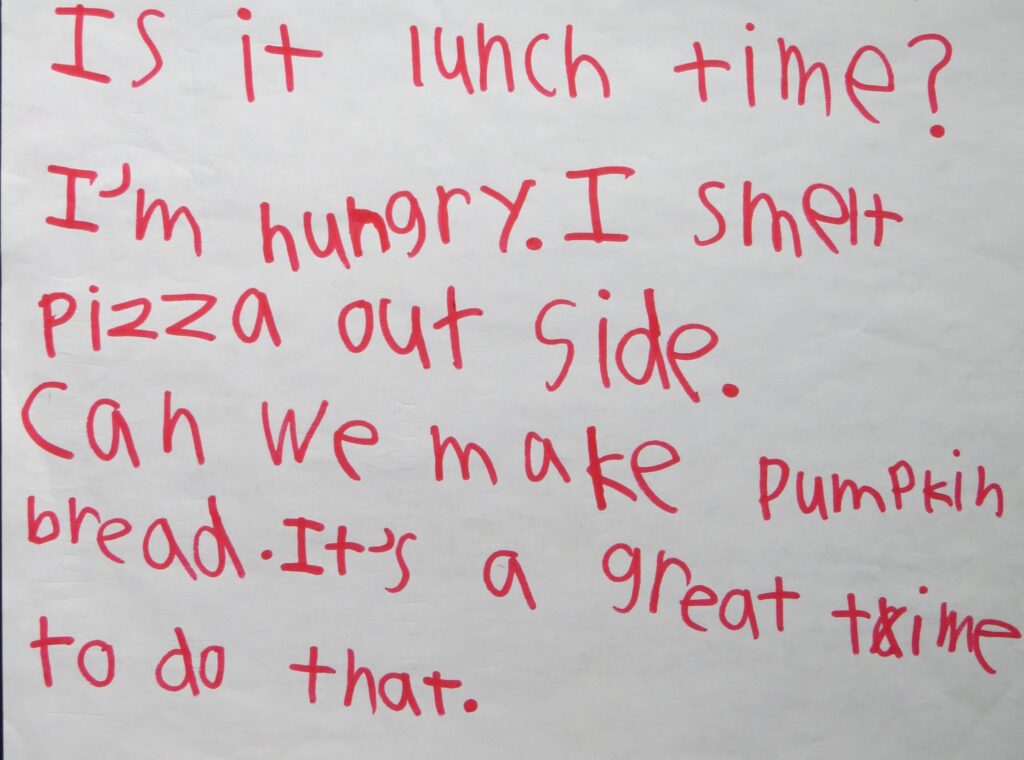
Truth be told, it didn’t make me get off the phone. But, it made me want to cook faster and I sure praised them for their thought and confidence to write a note!
Last week, my daughter turned 4. She and I were working on the birthday party decorations. First, we painted paper. Then, I was cutting letters out of the painted paper to spell, “Happy Birthday!”
On her own initiative, she got out a marker and scratch piece of paper and began drawing each letter as I cut them.
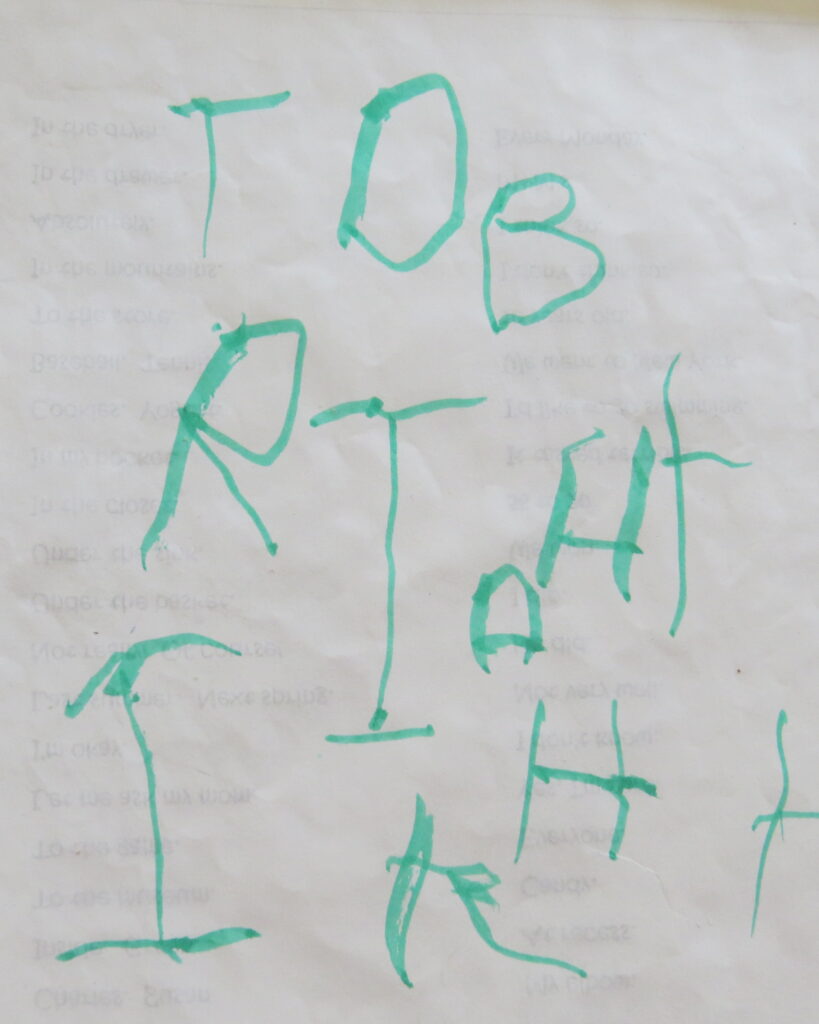
There’s no question, that writing isn’t a favorite subject for most students, parents and teachers.
Children Can Enjoy Writing
Just one week ago, I received this feedback from a parent. She wrote this email after 3 consecutive Friday morning classes. (I will change names for security purposes.)
Angie, Thank you so much for what your doing!! Ethan was so proud of what he’d written and couldn’t wait for me to read it! What a joy to see both of my boys so thrilled with writing. Somehow you’ve made what was a dreaded thing fun! I’m so glad you’re teaching this course. I was so concerned when I was told this year would be a writing class and thought I’d have to drag the boys to school! Bless you and thank you for sharing your gifts with us!
While it’s not favored, I believe writing can be fun and made easier for students. That’s why I created this website, to relay strategies and ideas that help build confidence in young writers early on.
Likewise, while writing may not be a favorite among high school students, my goal is to erase the “difficult” factor. I can understand if they don’t like writing or don’t want to do it. However, I want them to feel confident that they are able to do it.
Essentially, I do believe writing is very important. But truthfully, I am open to discussion about it…
If you would like to receive ideas, updates, tips and tricks regularly, as well as have a chance to offer feedback, please sign up for my free monthly newsletter below!
